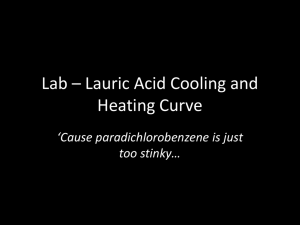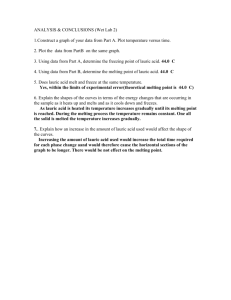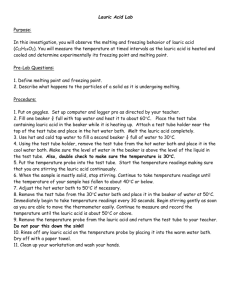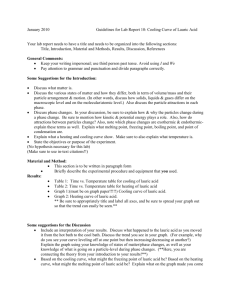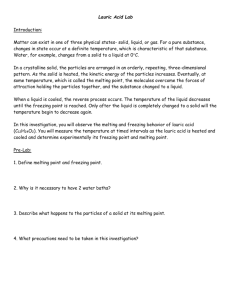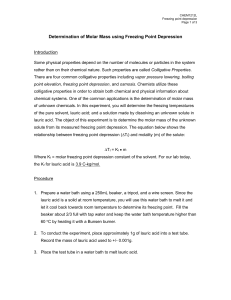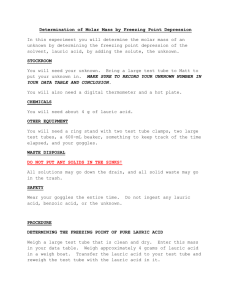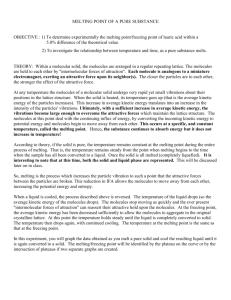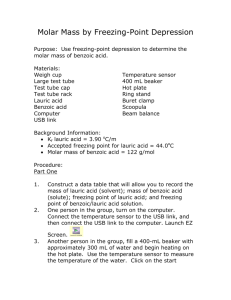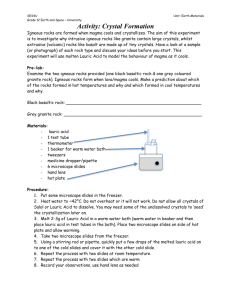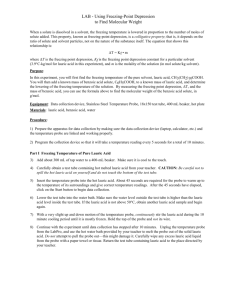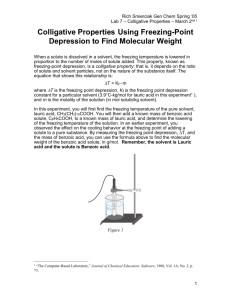Activity 5It`s Freezing In Here
advertisement
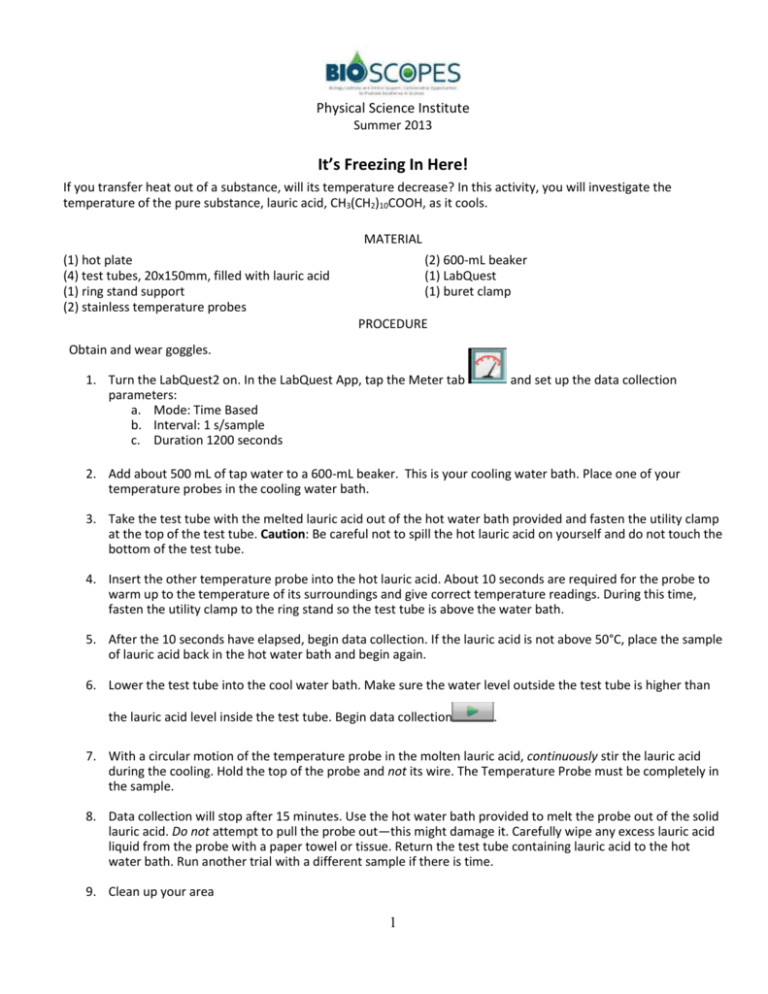
Physical Science Institute Summer 2013 It’s Freezing In Here! If you transfer heat out of a substance, will its temperature decrease? In this activity, you will investigate the temperature of the pure substance, lauric acid, CH3(CH2)10COOH, as it cools. MATERIAL (1) hot plate (4) test tubes, 20x150mm, filled with lauric acid (1) ring stand support (2) stainless temperature probes (2) 600-mL beaker (1) LabQuest (1) buret clamp PROCEDURE Obtain and wear goggles. 1. Turn the LabQuest2 on. In the LabQuest App, tap the Meter tab parameters: a. Mode: Time Based b. Interval: 1 s/sample c. Duration 1200 seconds and set up the data collection 2. Add about 500 mL of tap water to a 600-mL beaker. This is your cooling water bath. Place one of your temperature probes in the cooling water bath. 3. Take the test tube with the melted lauric acid out of the hot water bath provided and fasten the utility clamp at the top of the test tube. Caution: Be careful not to spill the hot lauric acid on yourself and do not touch the bottom of the test tube. 4. Insert the other temperature probe into the hot lauric acid. About 10 seconds are required for the probe to warm up to the temperature of its surroundings and give correct temperature readings. During this time, fasten the utility clamp to the ring stand so the test tube is above the water bath. 5. After the 10 seconds have elapsed, begin data collection. If the lauric acid is not above 50°C, place the sample of lauric acid back in the hot water bath and begin again. 6. Lower the test tube into the cool water bath. Make sure the water level outside the test tube is higher than the lauric acid level inside the test tube. Begin data collection . 7. With a circular motion of the temperature probe in the molten lauric acid, continuously stir the lauric acid during the cooling. Hold the top of the probe and not its wire. The Temperature Probe must be completely in the sample. 8. Data collection will stop after 15 minutes. Use the hot water bath provided to melt the probe out of the solid lauric acid. Do not attempt to pull the probe out—this might damage it. Carefully wipe any excess lauric acid liquid from the probe with a paper towel or tissue. Return the test tube containing lauric acid to the hot water bath. Run another trial with a different sample if there is time. 9. Clean up your area 1 CALCULATIONS AND RESULTS 1. What evidence is there on your graph that there was a continuous net transfer of heat to the cooling water during the experiment? 2. What physical change occurred to the lauric acid sample in the test tube during the cooling process? 3. a) Is there a time interval on your graph where the temperature of the lauric acid didn’t change as it transferred heat to the surrounding water? b) If so, at what temperature did this occur? 4. If you used half the mass of lauric used in this investigation, predict how the cooling graph would compare to the one you produced? 5. a. b. c. d. e. f. g. methyl acetate acetone isopropyl t-butanol cycloheptane n-butanol s-butanol Melting point(oC) Boiling point(oC) -98 57 -95 57 -89 82 26 83 -12 188 -90 118 -89 100 Which of the substances listed in the table above are solids, which are liquids, and which are gases at: a. room temperature (20oC) ________________________ b. 50oC _________________________ c. 100oC _________________________
